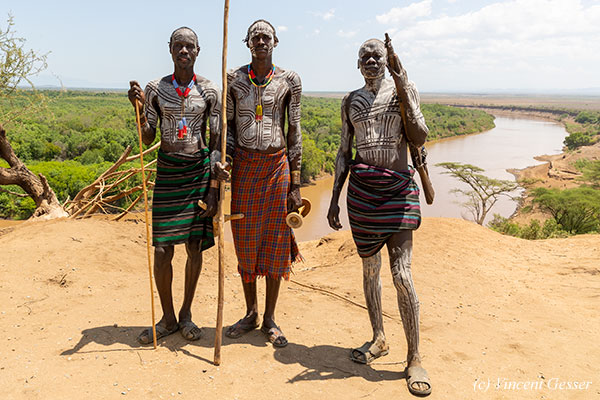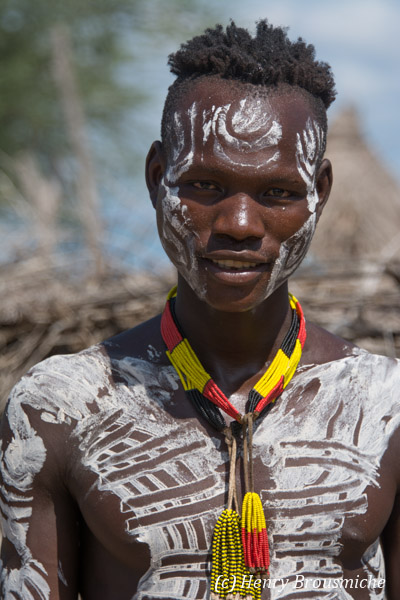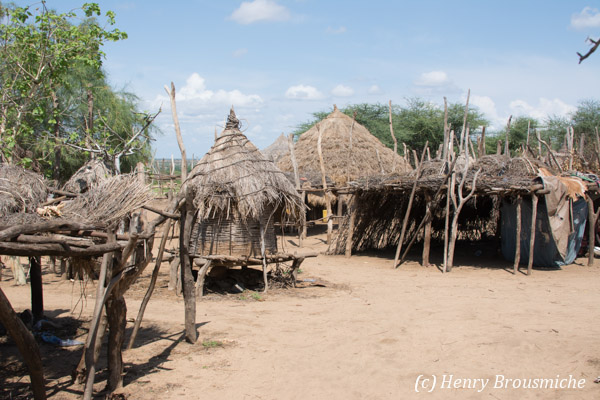Karo
The Karo, the only truly sedentary tribe in the entire region, live mainly in the village of Douss. Like all the people of the Omo region, the Karo give a lot of attention to body decorations such as body painting, scarifications, jewels and so on. The village of Douss overlooks a loop of the Omo. Many straw huts provide temporarily shelter for 500 of the 1,000 individuals of the Karo ethnic group. Focusing on agriculture following an ancient but dramatic plague of cattle, they are the most sedentary tribe of the Omo valley. The country, flat and fertilized by the floods of the river, lends itself to the harvests of millet, sorghum, beans, bananas and tobacco, embellished with the products of fishing and the collection of honey. Smuggling with Uganda, Sudan and Kenya also enables the supply of weapons.
No central authority manages the various social groups that meet regularly at the call of the elders. These encounters take place under the control of Nu-lmba: the fathers (imba) of the fire (naked). They alone know how to invoke the ancestors and ask for advice. Each clan is in charge of a defined task for a given period, with these social obligations being assigned in turn. Only magic and communication with ancestors remain in the sphere of some families.
The ritual stages of the life of a Karo are very similar to those of a Hamar and the bulls necessary for the Ukuli graze on the pastures of the latter. Men eat among themselves exclusively, and the birth rate is decided by the elders. This planning of births, intended to limit the tribe in relation to its possibilities for survival, is currently and voluntarily overseen by the council, the figure of 1,000 members of the tribe being the lower limit before the gradual disappearance of an ethnic group.





